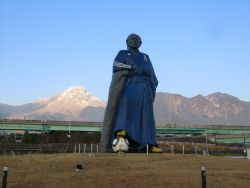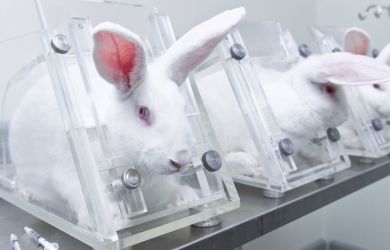
October 22, 2009
Shiraho Sangomura
A WWF-led project seeks to preserve coral reefs off Ishigaki Island
By Metropolis
Originally published on metropolis.co.jp on October 2009

It’s fitting that the coral lagoon near the Okinawan village of Shiraho has traditionally been known by two different names. The “Sea of Treasure” boasts a biodiversity similar to Australia’s Great Barrier Reef, in an area that covers only a 12km radius. Yet the “Sea of Survival” is also struggling against the combined threats of climate change and human activity.
The World Wildlife Fund inaugurated the Shiraho Coral Reef Conservation and Research Center, a.k.a. Shiraho Sangomura (“Coral Village”), in the mid-’80s. At the time, the lagoon was imperiled by a land reclamation project associated with the construction of a new airport. Surveys conducted in collaboration with the International Union for the Conservation of Nature highlighted the importance of the lagoon and led to a domestic and international outcry among citizens,scholars, conservation groups and celebrities. The original airport plan was ditched in favor of an inland site a few kilometers along the coast. Yet with the new airport scheduled for completion in 2013, the battle is far from over—and several new threats to the lagoon have emerged in the years since.
Anyone who has visited Ishigaki by plane and experienced the nerve-shredding brakes on the notoriously short runway might be thankful for a new airport. They may, however, change their mind if they are aware of the human and environmental costs involved. Although a government-sponsored information center at the new site maintains that the project will not affect marine life, the WWF has significant concerns. Among them are the separation of land/sea ecosystems, the loss of coastline greenery, contaminated groundwater, changes in sea salt density, chemical waste, and the impact of noise pollution on aquatic life.
“Since the start of construction, changes in the amount of red soils and the deterioration of corals have been observed,” explains Shiraho Sangomura director Masahito Kamimura. Although the group hasn’t found direct evidence to link this phenomenon to the airport, the potential threat is enormous.
A full 25 percent of marine organisms depend on coral reefs, which constitute only 0.1 percent of the total area of the earth’s oceans. Japan’s Ryukyu Islands are particularly abundant—the area is home to the third-largest reef system in the world in terms of coral, and ranks first in the number of indigenous species. Lying off the east coast of the popular tourist destination of Ishigaki, the spectacular Shiraho lagoon features the oldest blue coral in the northern hemisphere, as well as 300 species of fish. The coral has long been used in traditional rituals and festivals, as well as for food and building materials.
“The place is invaluable, being connected to the spiritual culture of people in Shiraho,” Kamimura says.
Besides the construction of the airport, another grave threat to the lagoon comes from farming along the Todoroki River. In recent years, vast tracts of wild vegetation have been appropriated for agricultural usage, and heavy rainfall now leads to a run-off of red soil directly into the sea. Shiraho Sangomura is helping to create a model of sustainable farming which prevents run-off, and locals are being encouraged to grow higher-value produce like mangoes. This is opposed to traditional sugar cane farming, which is more labor-intensive and not particularly lucrative. The group has already succeeded in establishing successful farmers markets.
The organization has also been championing a model of ecotourism.
“Snorkeling has become a huge industry, and damage to the lagoon has occurred [because of it],” Kamimura says. “Although minimal compared to other threats, it can easily be avoided.”
To that end, his group has established a separate community-based preservation organization called Shiraho Sakanawakuumi Kyogikai. This body is concerned with the restoration of traditional fishing tools to reduce coral damage, the setting of tourism guidelines, and the creation of protected areas. Kamimura says that although these efforts hold great promise, Shiraho will require vast amounts of time, effort and expertise to ensure that its treasure doesn’t become lost forever.
For more information or to make a donation, call WWF Japan at 03-3769-1711 or see www.wwf.or.jp. Anyone making a contribution of ¥3,500 or more per year will become an honorary Shiraho Sangomura Shiraho Coral Villager. www.wwf.or.jp/shiraho (Japanese)





